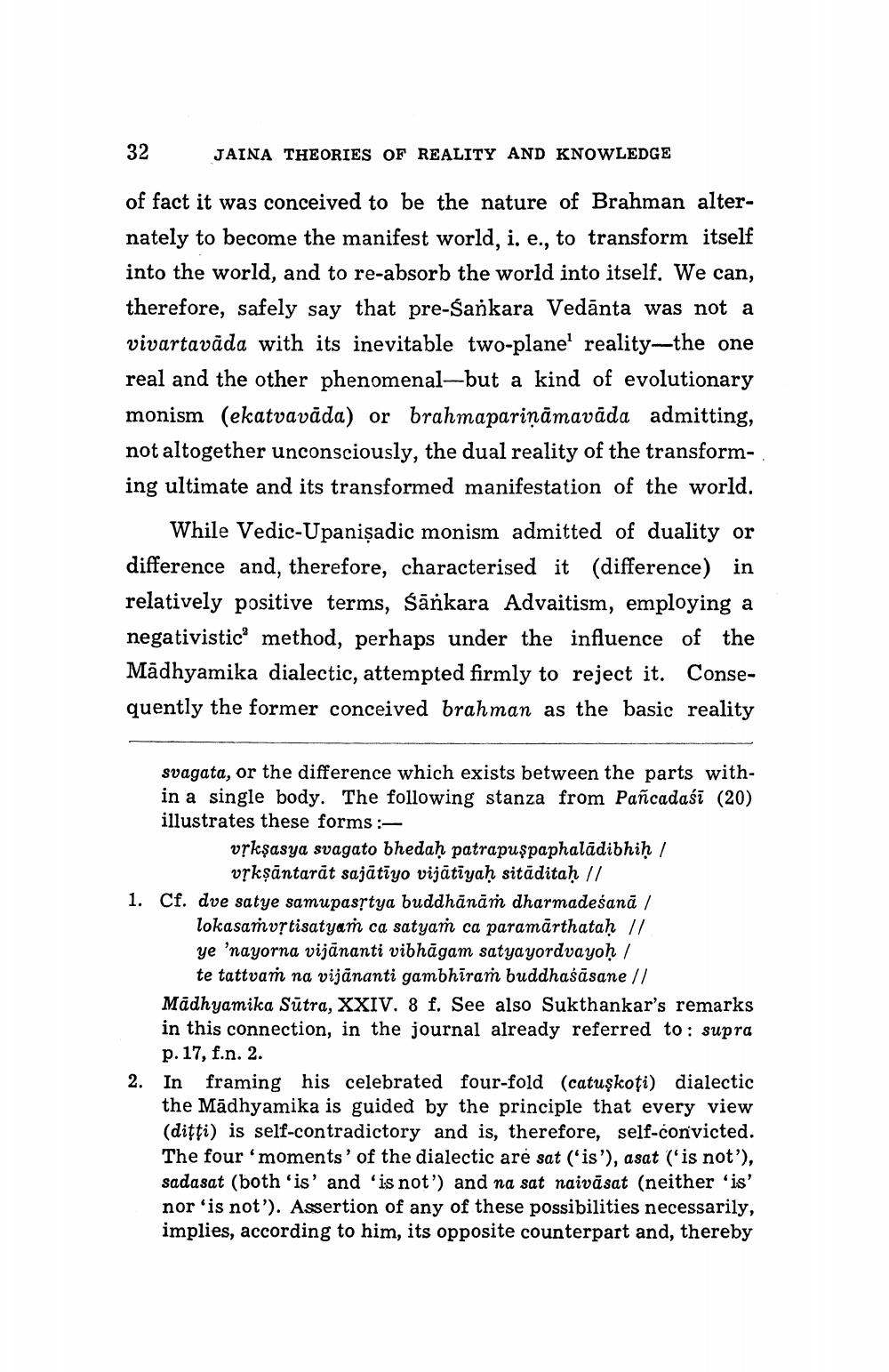________________
32
JAINA THEORIES OF REALITY AND KNOWLEDGE
of fact it was conceived to be the nature of Brahman alternately to become the manifest world, i. e., to transform itself into the world, and to re-absorb the world into itself. We can, therefore, safely say that pre-Sankara Vedanta was not a vivartavāda with its inevitable two-plane' reality-the one real and the other phenomenal-but a kind of evolutionary monism (ekatvavāda) or brahmapariņāmavāda admitting, not altogether unconsciously, the dual reality of the transforming ultimate and its transformed manifestation of the world.
While Vedic-Upanisadic monism admitted of duality or difference and, therefore, characterised it (difference) in relatively positive terms, Śānkara Advaitism, employing a negativistic method, perhaps under the influence of the Madhyamika dialectic, attempted firmly to reject it. Consequently the former conceived brahman as the basic reality
svagata, or the difference which exists between the parts within a single body. The following stanza from Pañcadasi (20) illustrates these forms:
vṛkṣasya svagato bhedaḥ patrapuspaphalādibhiḥ / vṛkṣāntarāt sajātīyo vijātīyaḥ sitäditaḥ //
1. Cf. dve satye samupasṛtya buddhānāṁ dharmadeśanā / lokasamvṛtisatyam ca satyam ca paramarthataḥ // ye 'nayorna vijānanti vibhāgam satyayordvayoḥ / te tattvam na vijānanti gambhiram buddhasasane // Madhyamika Sutra, XXIV. 8 f. See also Sukthankar's remarks in this connection, in the journal already referred to: supra p. 17, f.n. 2.
2. In
framing his celebrated four-fold (catuşkoți) dialectic the Madhyamika is guided by the principle that every view (ditți) is self-contradictory and is, therefore, self-convicted. The four moments' of the dialectic are sat ('is'), asat ('is not'), sadasat (both 'is' and 'is not') and na sat naivāsat (neither 'is' nor 'is not'). Assertion of any of these possibilities necessarily, implies, according to him, its opposite counterpart and, thereby




